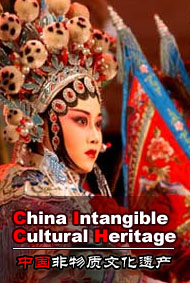
| Heritage Home | ||
| Literature | ||
| Music | ||
| Dance | ||
| Drama | ||
| Quyi | ||
| Acrobatics/Sports | ||
| Fine Arts | ||
| Crafts | ||
| TCM | ||
| Custom | ||
|
|
|
Kite-Making Techniques
Families of the Yang Clan in Yangjiabu, a small town in Weifang, started to make kites in the early years of the Ming Dynasty (1368-1644). Villagers in Yangjiabu applied the techniques of woodblock New Year picture-making to kite-making. In the spring, they flew kites in their free time for entertainment. But gradually, kites became commercial products. By the Qianlong reign (1736-1795) of the Qing Dynasty, the kite-making business was already an important industry in Weifang. The characteristics of the artistic style and crafting of Weifang kites are their carefully selected materials, exquisite sculptures, vivid images, bright-colored paintings, and agile flight. Birds, animals, flowers, fishes, insects, folk stories and fairy tales are the main subjects painted on the kites or shapes of kites. Ⅱ. Banyao Kites in Nantong Nantong is located in the east of Jiangsu Province, near the mouth of the Yangtze River, where the mild climate and wind power are conducive to kite-flying. The Nantong Banyao Kite is also known as the Whistling Banyao, which dates back to the Northern Song Dynasty (960-1127). Banyao kites are enormous and flat, with hexagons as the base frame and decorated in exquisite paintings in strong colors. The most outstanding characteristic of the Banyao kite is the sound device. Various whistles, big and small, with anywhere from one hundred to three hundred sounds, are installed on the kite. While flying, it will make different sounds, like a symphony in the sky. It is more exquisite and elegant when compared with northern kites. Ⅲ. Lhasa Kite Lhasa kites are popular in Lhasa, Shigatse, and neighboring Nepal. Kite-flying once prevailed among Tibetan aristocrats during the Qing Dynasty. The 13th Dalai Lama was said to be a kite-lover. The eighth month of the Tibetan calendar is the season for kite flying. There are strict regulations for kite flying in Tibet. For example, kites are only flown after The Shoton Festival in Lhasa. Kites in Tibet are usually in the shape of diamond. The difference lies in the designs painted on the kite which can be beards, black heads, staring eyes, teeth, aprons, or leg bones. When flying kites, people love to 'fight' with each other by controlling the rise and fall of the kites. One loses when the thread is broken. Therefore Tibetans used to coat the threads with a mixture of smashed glass, rice, sugar and water to make them strong. |